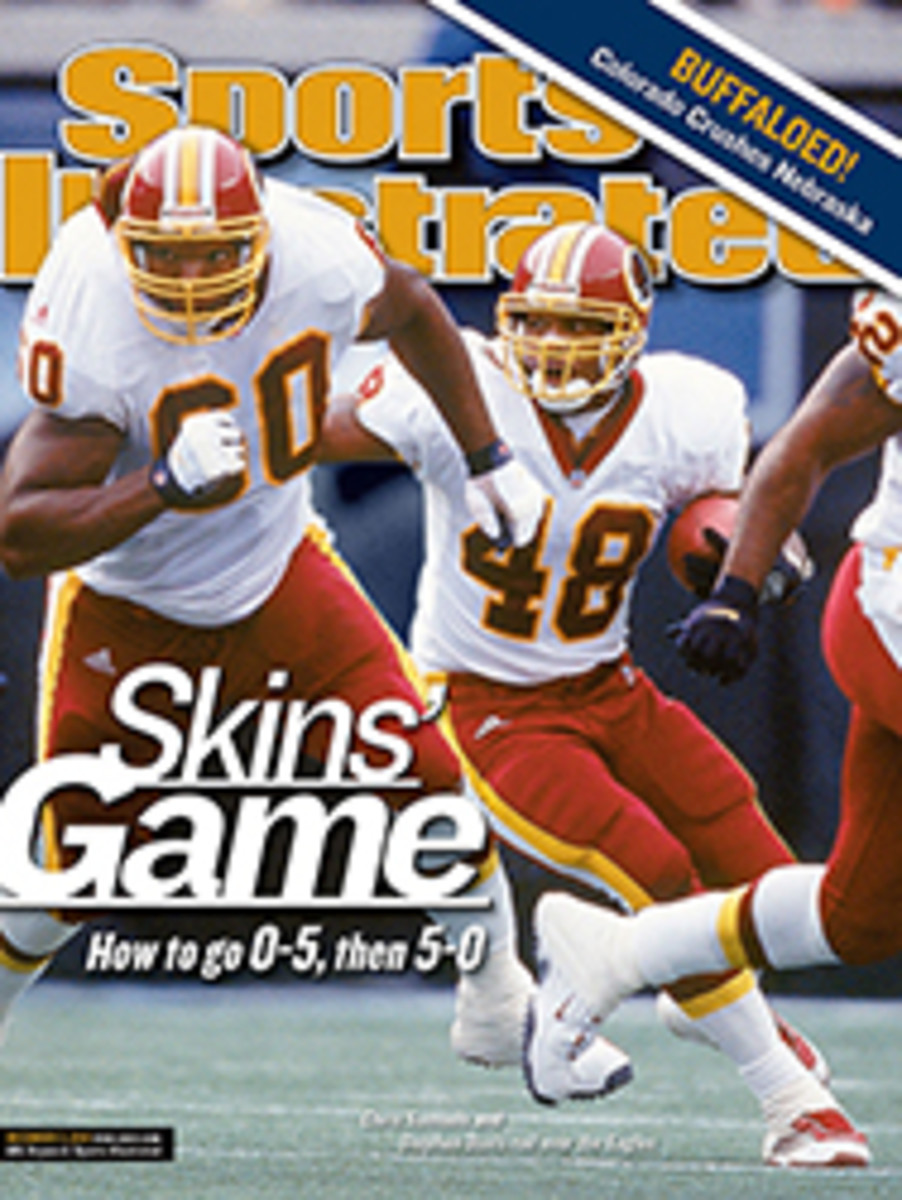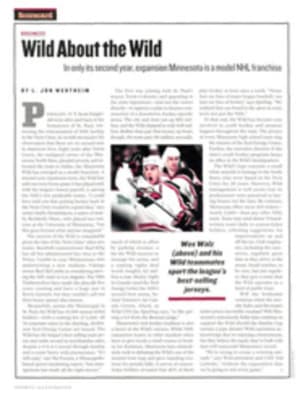
It's A Jungle Out There A torturous three-day bike race across Costa Rica, an annual event called La Ruta, has always been won by a Costa Rican. This year a U.S. rider pushed the hosts to the limit
Tinker Juarez had raced over 190 miles, and up 30,000 collective
feet, of rugged tropical mountain terrain by the time he reached
the churning waters of Costa Rica's Madre de Dios river. It was
the third stage of November's La Ruta de los Conquistadores, and
Juarez, a three-time NORBA cross-country mountain bike champion
and two-time member of the U.S. Olympic mountain bike team, was
struggling to finish.
Torrential rains doused the banana plantations and swelled the
rivers, halting Juarez, as well as Costa Rican Olympian Jose
Bonilla and the rest of the lead pack, only miles from the
Caribbean coast and the finish line. One by one the five front
riders hoisted their bikes overhead and stepped into the rushing
torrent. Juarez went next to last. Debris floated past as the
thick brown water reached chest height, and Juarez's wheel
dipped into the flow. The current grabbed hard at his bike,
spinning him around and shaking his footing from its precarious
perch on the slippery riverbed boulders.
"Help! I need help!" Juarez shouted, suddenly facing the mortal
threat of being washed downstream. Within seconds the rivals he
had so fiercely sought to crush during 14 hours of racing came
to his aid. Juarez held tight to one wheel of his sinking bike
as the racers turned rescuers running along the shore grabbed
the other wheel and pulled him to safety.
This was La Ruta exactly as its creator, ultraendurance athlete
Roman Urbina, had intended: part mountain bike race worthy of
the best competitors in the world and part adventure race that
forces cooperation from the most unlikely pairs and milks
humility from the most confident athletes. It has been called
the toughest mountain bike event on the planet, but few cyclists
believe that until they ride La Ruta themselves.
The annual race, which was first held in 1992, traces the path
the Spanish conquerors blazed through the jungle early in the
16th century. It links nearly 300 miles of sometimes barely
passable terrain, gaining cumulative elevation equal to Mount
Everest's summit. La Ruta, which is privately sponsored, spans
three grueling days and leads competitors through vastly
different ecosystems and geographical regions, not to mention
wild fluctuations of weather. It tests not only physical
endurance and technical riding skills but also the ability to
adapt to unfamiliar terrain. Coming into this year, Costa Rican
competitors had a vise grip on their homeland race; no foreigner
had finished first.
On Nov. 16, 277 men and women--150 Costa Ricans and the rest
from nine other nations--pedaled off the predawn start on the
Pacific Coast, each with a distinct set of goals. U.S. riders
Bob Kimber and Shannon Warburg co-piloted the race's only tandem
bike through descents that pitched even the best riders over
their bars. American Kenny Owen became the first cyclist to
complete La Ruta on a single-speed drivetrain, while the others
relied on 27 gears. Most remarkably, Brett Wolfe, an amputee and
experienced long-distance cyclist, finished strong while
pedaling with his one leg.
Riders have to be extraordinarily determined to finish (more
than a quarter of this year's field failed to complete the
course), and those who return every year will tell you that La
Ruta is much more about the journey than winning the $1,000 cash
purse. "It's a very personal challenge," says Urbina, age 39,
who has competed in five La Rutas. "You have to be focused and
do absolutely everything right just to finish."
Doing everything right means training for tropical 100[degree]
heat and 14,000 feet of excruciating climbing that winds through
remote jungles and tiny coffee farms for 87 miles on the first
day. It means being prepared for the freezing rain near the top
of Mount Irazu, an 11,260-foot-high volcano that typically sends
a handful of hypothermic athletes to the hospital on Day 2. It
also means having the fortitude to confront risky river
crossings, rotting foot bridges over alligator-infested waters
and the strong possibility of ending up exhausted to the point
of hallucination.
Bonilla won the race. A 23-year-old pro, he had spent months
training on the route with his team, Pizza Hut/Specialized, and
he upheld the Costa Rican dynasty by fending off a strong
challenge from Juarez of Southern California. Juarez, 40, had
more to contend with than Bonilla's youth and familiarity with
the course. Many of the Costa Rican fans on hand did what they
always do: They helped their own. Like the rest of his
countrymen, Bonilla benefited from water handouts by roadside
spectators as well as from friends' unofficial support vehicles.
That support, which most foreign riders acknowledged without
complaint as a home field advantage, enabled Bonilla to blow
through food and water stations. Juarez and other foreign
competitors were forced to stop and replenish themselves.
"I was neck and neck [with Costa Rican riders], and when I
stopped at the checkpoint, they went right on by," said James
Mortenson of Vail, Colo., who finished third in two stages and
fifth overall. "In a tight race that's a big deal."
Despite that disadvantage, and his ordeal in the river, Juarez
beat all the Costa Ricans save one and finished second in a time
of 15:55:40. Bonilla's 15:40:32 was a La Ruta record. In Stage
1, Juarez edged Bonilla by 31 seconds after a gripping
head-to-head battle, but he lost the advantage the next day when
Bonilla exploded past him in the early stretch of a 9,000-foot
continuous climb. Juarez subsequently crashed on the descent,
and at the end of Stage 2, Bonilla had a 16-minute lead that
essentially ensured his victory. "It's not about how you feel in
the beginning; it's about whether you can suffer for so long,"
Juarez says. "As far as the races I've done, this is the
toughest. The bottom line is I came here thinking I could win.
But that was hard-core."
COLOR PHOTO: PHOTOGRAPHS BY ABRAHM LUSTGARTEN DEEP TROUBLE Among the elements making the race difficult were heavy rains that caused river crossings to be more about safety than speed.
COLOR PHOTO: PHOTOGRAPHS BY ABRAHM LUSTGARTEN PIT STOP The route spanned 300 miles of sometimes barely passable land, including this washed-out stretch high on Mount Irazu.
TWO COLOR PHOTOS: PHOTOGRAPHS BY ABRAHM LUSTGARTEN HOMELAND DEFENSE The U.S.'s Juarez (left) led until Costa Rica's Bonilla (below) surged up a 9,000-foot incline.
This was La Ruta as its creator intended: It forced cooperation
from unlikely pairs and milked humility from confident cyclists.
The Costa Rican fans helped their own: Bonilla benefited from
spectators' water handouts and friends' support vehicles.

